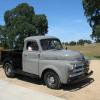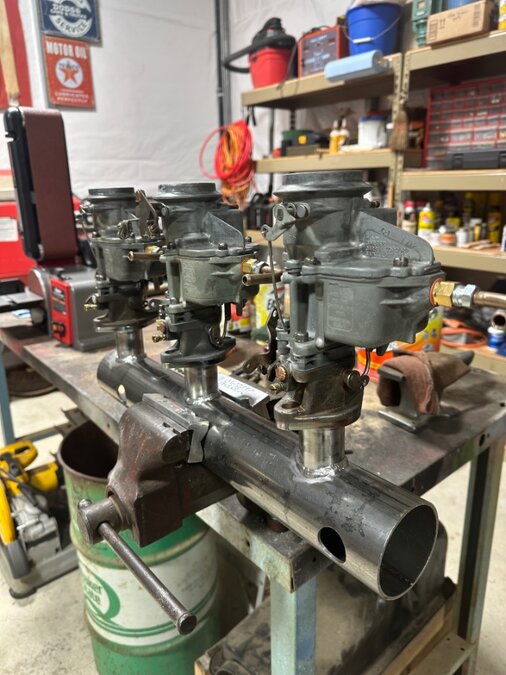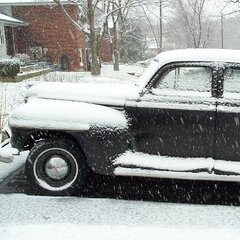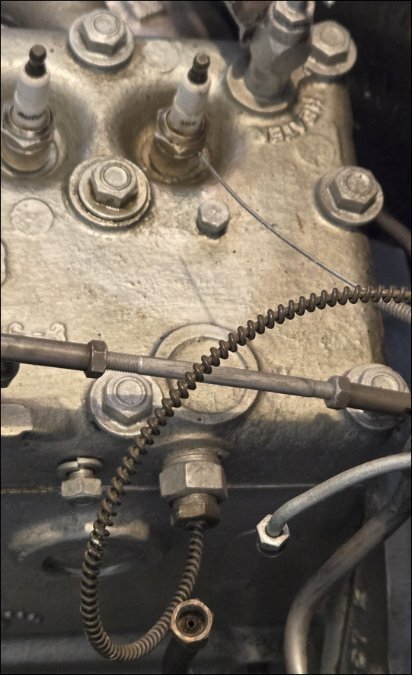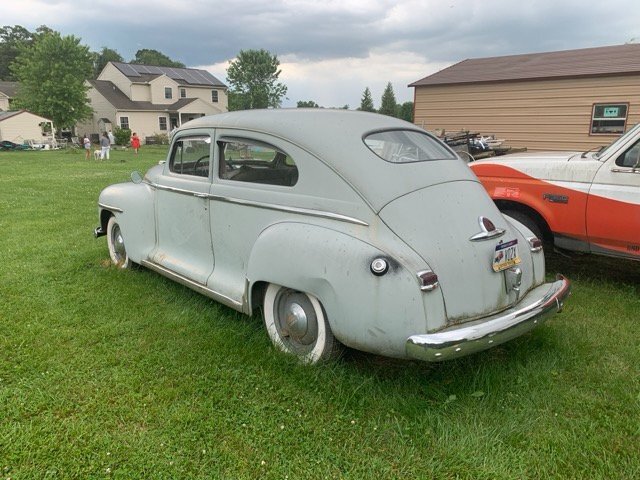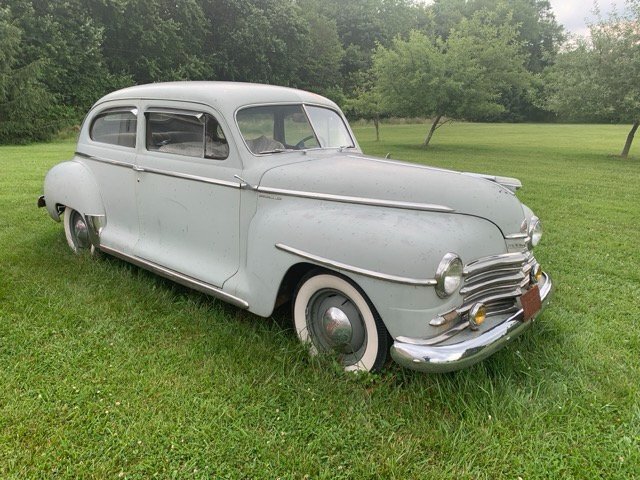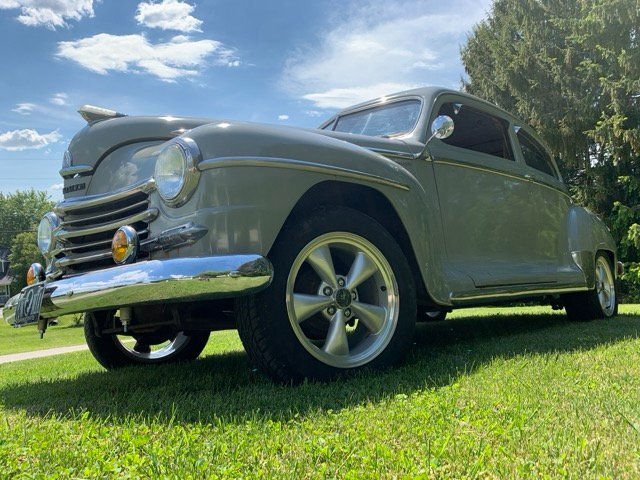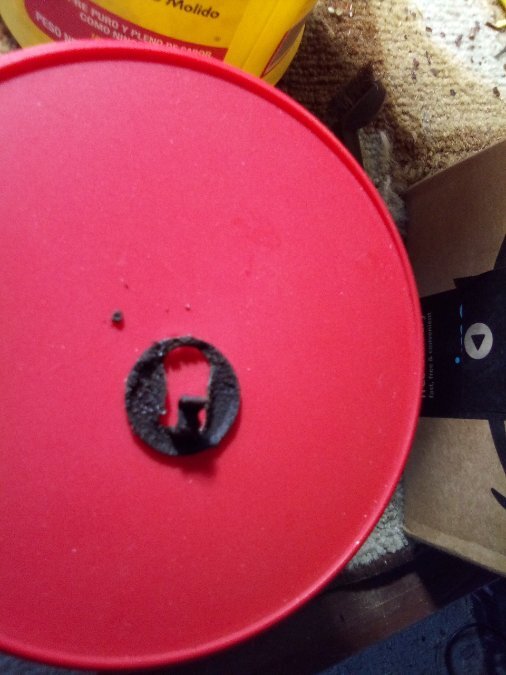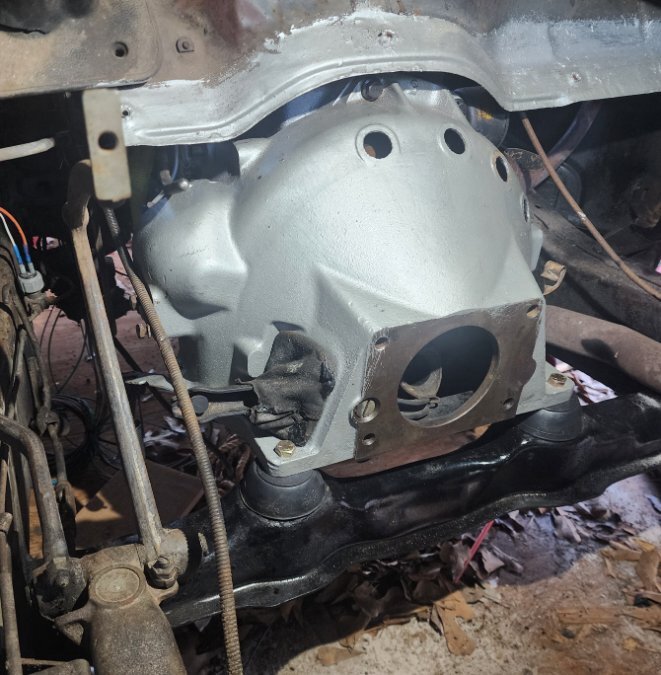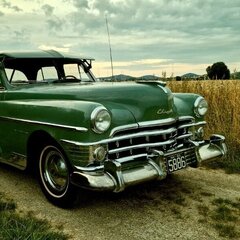Leaderboard
Popular Content
Showing content with the highest reputation on 11/18/2024 in all areas
-
3 points
-
random update time, been slowly working on truck but no big changes. after ~4 year slumber, 4 new injectors and an hour to prime the fuel system, I successfully started the old Detroit and turned fuel into noise yesterday! good oil pressure, no run-away condition. back to doing sheetmetal fab, rebuilding the inner fender since I had to remove most of them for CAC/intercooler plumbing. Im hoping to focus and be done with sheetmetal work this winter as we are looking to move next year so would be nice to drive the truck to the next location rather than trailer.2 points
-
Thanks! I started off by cleaning out the back of the gauge, then tested it with air. It was right on the money. Reassembled it and ran the motor and the pressure looks good now. It's actually showing slightly higher pressure than before across the board. I think the relief valve was stuck in place, it took a bit of wiggling and turning it inside the get it out. Cleaned up that assembly and replaced it was as well (without the nut). Always pleased when the simple solution in the correct one. I'll sure be watching the pressure closely as I continue to wake the truck up.2 points
-
I did some research on Non-Detergent and detergent motor oils: read the attached article it might be of interest to everyone. This is also going to be posted in my local AACA club. Everyones input is of importance so do not feel that you will hurt my feelings. I am just reporting on what I was able find while doing a search on detergent and non-detergent motor oils. Rich Hartung Desoto1939@aol.com detergent vs non detergent motor oil.docx1 point
-
1 point
-
I found this decently-preserved 1947 Plymouth Special Deluxe at a yard sale approximately 5 years ago. While the car wasn't actually part of the sale, I spoke to the owner and we struck up a deal for the car at $3750, which I felt was a good deal as the car had spent the majority of life in a garage and had 36,000 original miles. I was in the middle of buying a new house and moving, so I didn't get to spend much time on the car for the first two months. Once I did finally dig into it a little and started it up for the first time, it was running very poorly and had dropped a cylinder. After pulling a compression test and finding cylinder 3 with 0 psi, I immediately knew I had a stuck valve. I then proceeded to pull the head and low and behold the exhaust valve was fully stuck open. I sprayed a little bit of ATV at the stem and tapped it down lightly with a rubber mallet. After working it up and down a few times, it freed up and has been perfect ever since. Crisis averted. Since owning the car I have converted it to 12v with all new wiring and a fuse block, discarded the heavily damaged original seats and installed 10-way power black leather seats from a 2015 Ford Escape, and started patching any holes in the floor. I've linked some videos below of work I have done to this point, with much more to come. I have new black carpet to install and a new creme headliner as well. But the car is truly coming along.1 point
-
Thank you! While my kids are all grown and will likely not ride in the car, seat belts will be going in. That way if I pass this car down someday, my kids can take their kids in it too.1 point
-
Where is this hole located? Because if it's above the number 6 cylinder that's supposed to be sealed with a pipe plug when not in use and its purpose is to mechanically set the ignition timing. Generally speaking coolant temperature probe goes in the side of the head not the top.1 point
-
1 point
-
I'm making headway. I was able to get the 230 set into the car with new clutch and all new motor mounts. I did find that the clutch torque shaft was warn really bad I thought it was just the bearings but looking over the linkage I found many warn parts. I found a replacement on ebay so hopefully that will tighten things up.1 point
-
I installed the clutch in a powerwagon. I used a stock NOS throw out bearing. The original clutch was a 10" finger type. I went with the diaphragm for the lower pedal pressure. Good luck sorting it out, Scott.1 point
-
Diaphragm pressure plates usually require a different Throw Out Bearing. The T.O. Bearing needs to have a rounded contact surface so the spring fingers can roll over it. The fingers ( for want of knowing a better word ) on the standard pressure plate slide across the flat T.O. Bearing. So that is an item of concern if you're making the switch. Diaphragm Pressure plates have a low pedal pressure until they get worn, then it goes up. If you're familiar with this you can tell when a car needs a clutch just by stepping on the pedal. Plymouth made a lot of Taxi Cabs and one of the mods in the Taxi package was a 10 inch clutch. Thus they drilled all the flywheels with two patterns of bolt holes. However if you're planning to replace a worn 9 inch with a new 10 inch clutch you need to know the 10 inch uses bigger bolts. They are 3/8 x 16 nc which seems to be just like Big Block Chevy ( forgive my foul language ) I just ordered some from Summit Racing $9.99. ( back ordered at this time ) The 10 inch original type clutch that I got came from AB. I told them I had a 49 Plymouth and I wanted a 10 inch clutch, no problem. When you go to install your new clutch, you have to run a tap in the 3/8ths holes as they will have lots of crud in the threads. Start the tap on the clutch side as there is a straight section ( without threads ) which will align the tap and prevent cross threading. Rockauto has SKF T.O. Bearings which I hope are better than the noisy Chinese ones the AB sells. ( assume the Chinese bearings will last as long as the American made ones. I just can't put up with the noise )1 point
-
I'm so jealous of you guys, with your large multi-bay service barns, equipped with lift, compressed air, and professional welding and machine shop equipment, not to mention LED lighting, while I get by with an extra stall in my 3-car garage. But I get by. "I cried because I had no shoes. then I saw a man who had no feet." {Wise-ass retort: "So I took his shoes.")1 point
-
Yes, sir. And what a gratifying job it was to buff out this original paint and see it shine. Thank you.1 point
-
Hi John! Hot rodding seems to be very human. Everybody has their own take on it. Mostly we try to recreate our youth. When I got into Plymouths (49-54) they were called “Transportation Cars” and were available as needed for a standard price of $150. Out of high school I got a new car and over time it became my weekend race car, so I needed something more reliable. Thus I got a 49 Special Deluxe Club Coupe for $150. I could afford it and as long as I didn’t abuse it, I knew it would serve me forever. Now days old Plymouths are not $150 and they have decades more wear on them. So sometimes they need to have lots of deferred work done on them. Back in the 60s & 70s you never did any work on one. You got another one. It’s the American way that if you have to work on it, you want to make it better. I am caught up in that mode right now. I started off with a noisy throwout bearing, which became an Overdrive transmission with a new T.O. bearing that’s noisy, which became an Overdrive transmission with a 1940 gear set and an American made NOS throw bearing. You get the idea. It’s a fun thing that brings me joy. I am realistic, at my age I am not “restoring” this car. That’s too big a project. I am just having fun.1 point
-
Currently, I'm not planning any changes to the front end. Steering effort decreased substantially when I went from the old steel wheels to these aluminum Mustang wheels, so steering hasn't been much of a problem unless at a complete standstill.1 point
-
Please don’t think I still get upset about hot rods. I’ve out grown that. The hot rod guys love really nice paint and chrome. Their cars look fantastic! But the fact is, they were never built that nice even by accident when they brand new. I’ve had the pleasure of closely inspecting genuine “original” Model T Fords. Let me tell you they were just awful! However original Model Ts are extremely rare, they all have been repainted with modern paint and if the owner repaints the car they usually make the body parts fit right. Henry never made them that nice and if he ever saw one that was perfect, he would be mystified how that happened. lol In my miss spent youth I was a dealer mechanic. My Plymouths follow the formula of what a dealer mechanic would drive back in the day. If I can find an improvement from another MoPar vehicle that a dealer mechanic would know about, my car will have it. I have a Model A that the previous owner installed a T5 in. I really don’t like it. I am changing it to a 39 V8 gearbox with a torque tube mounted R10 Overdrive. As far as the wiring and switches and solenoids go….well a dealer mechanic would have an Overdrive that worked as designed. I appreciate the charm of the 49 to 52 Plymouths. I don’t want to get too far away from that charm. I think the Overdrive does nothing to diminish that charm. That’s my formula and while I like it, no one else has to like it. In fact I like the idea that most folks would think my car is dead stock. It’s all about fun and enjoyment.1 point
-
Oh wow that's awesome! That's super rare! Took me a while to find appropriate plates for my 1950 Chrysler.1 point
-
The switch I bought from ebay came today so here’s a photo of it on the carburetor. It was sold as a Studebaker OD switch but honestly I don’t think it cares what it goes on. Studebaker of all the car companies really embraced OD and had the highest percentage installed. They also used this carburetor a lot. The switch was new and came in a box with a part number. I am sure that number will appear in somebody’s catalog.1 point


